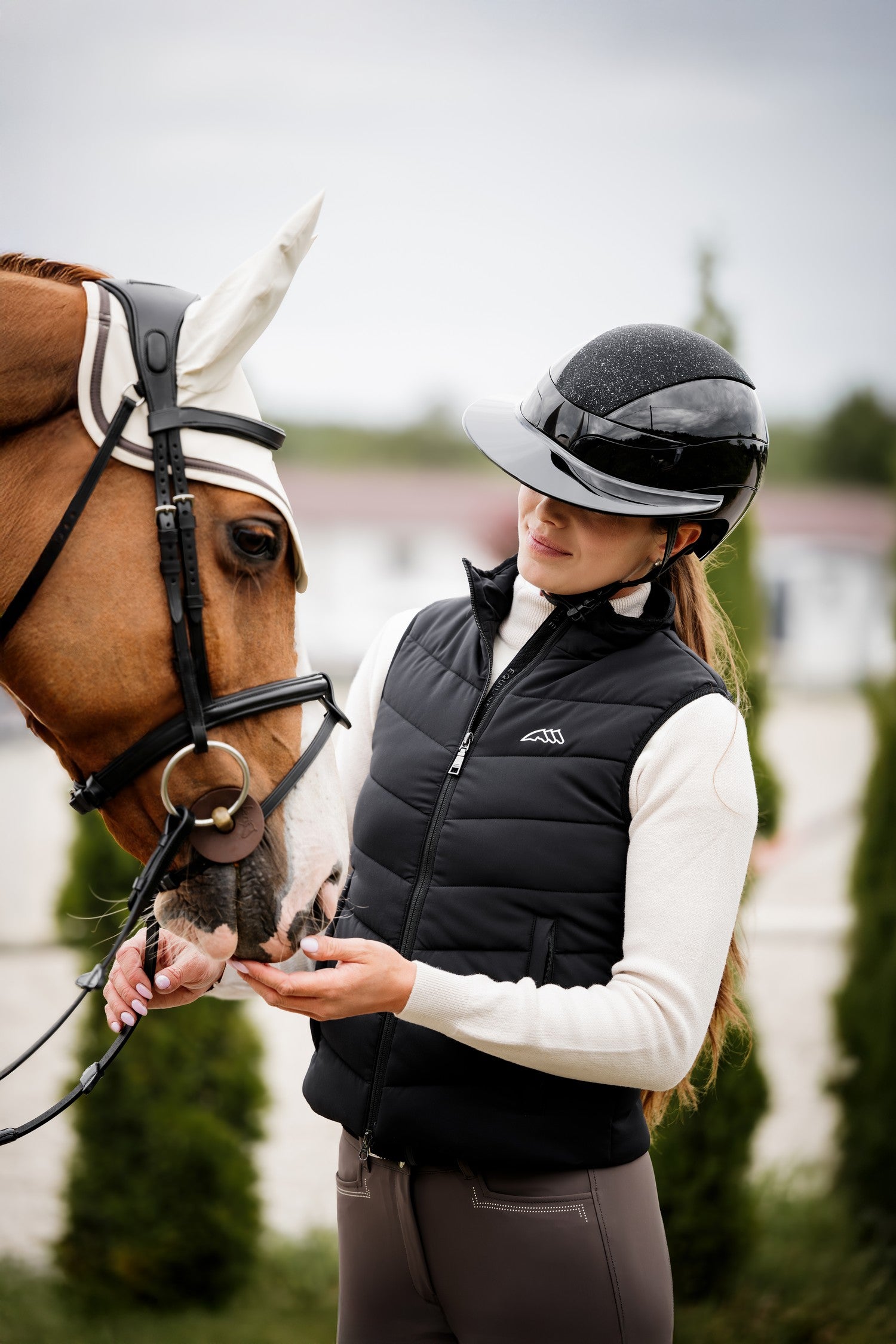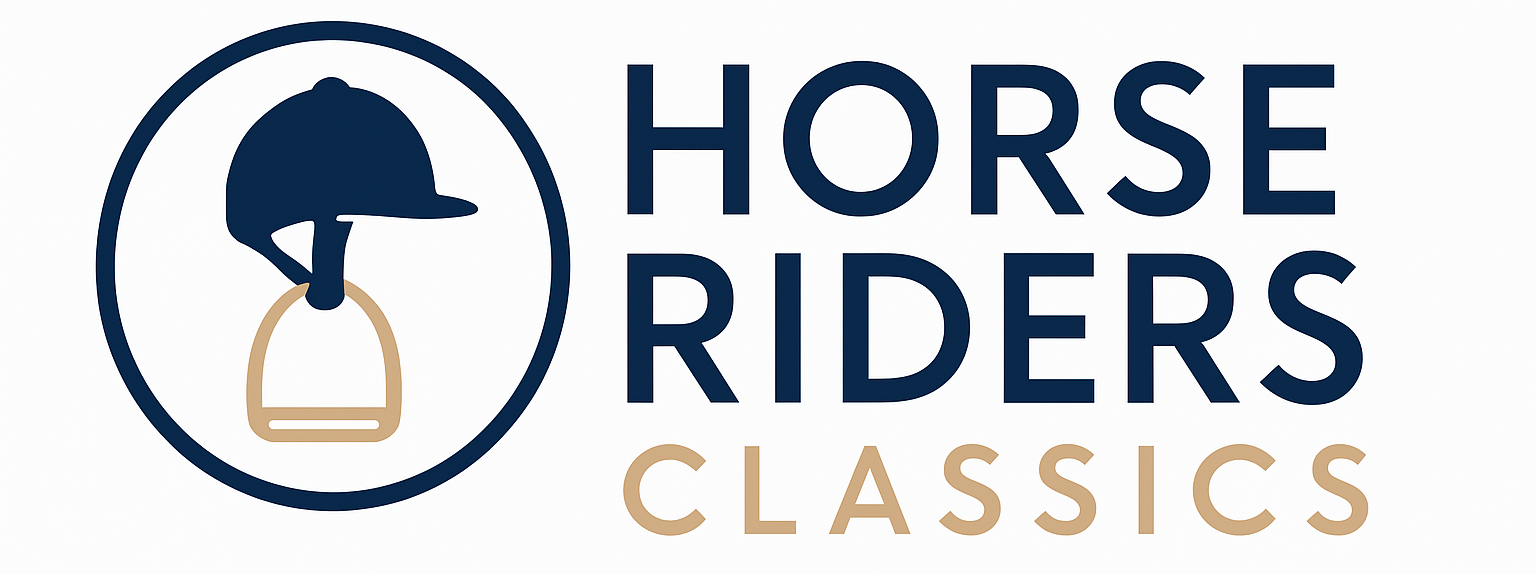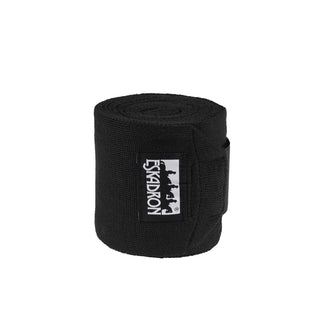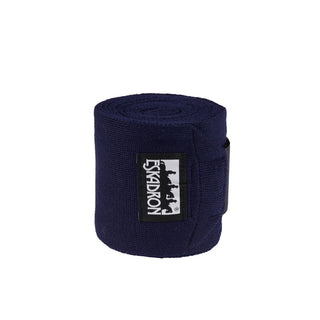Transport bandages and underlays are aids to protect the legs of horses during transport, especially over long distances or when the horse may be travelling in a stressful or unfamiliar environment. During transport, horses can easily injure themselves by, for example, hitting the trailer wall or tripping, and properly applied conveyor bandages with accompanying underlays help to prevent this. Below is a detailed explanation of the function, materials and correct use of conveyor bandages and underlays.
Function of Transport bandages
Transport bandages are specially designed to protect a horse’s legs from bumps, chafing and potential injuries during transport. They provide firm but comfortable support to the lower parts of the legs, including the fetlocks, tendons and joints. Their main functions are:
1. Protection from bumps: Horses can injure themselves during transport by kicking or bumping into the trailer or truck. Transport bandages provide a thick layer of protection to prevent injury to tendons, joints, or coronary band.
2. Support of tendons and joints: During transport, horses sometimes stand still for long periods of time or have to adapt to shocks or movements of the vehicle. Bandages help support tendons and joints, especially on long journeys.
3. Prevention of swelling: Transport can lead to fluid accumulation in the horse’s legs (stable legs or edema), especially if they are in a confined space for a long time. Bandages can help to prevent this by providing light compression and promoting blood circulation.
Underwraps for Bandages
Underwraps, also known as underbandages, are used in combination with transport bandages and play a crucial role in providing extra protection and comfort. They ensure that the pressure of the bandages is evenly distributed over the leg, which prevents pressure points or irritations. They also provide an extra layer of protection against impact.
- Materials: Underlays for conveyor bandages are usually made of soft material such as cotton, polyester or fleece. They are thicker than regular work underlays to provide maximum protection and comfort.
- Use: Underlays are wrapped smoothly around the horse's leg before the bandages are applied. It is important that they fit well and are free of wrinkles, as these can cause chafing or discomfort during transport.
Different types of Transport bandages
There are different types of transport protection available, depending on the needs of the horse and the length of the journey. The two most common types are:
1. Traditional transport bandages: These consist of wool or fleece bandages that are wrapped over a thick underlay. They provide close-fitting support and protection and are often used for horses that need a little extra support while travelling. Applying these bandages correctly requires some experience to ensure they are not too tight or too loose.
2. Pre-formed transport boots: These are ready-made boots that are used without underlays. They are often made of sturdy materials such as neoprene or plastic and cover the horse's leg from the knee or hock to the hoof. These boots are easy to use and often offer excellent protection against knocks.
Advantages of traditional transport bandages with under wraps
Although pre-formed transport protectors are very popular due to their ease of use, traditional conveyor bandages with underlays offer some specific advantages:
- Custom fit: Bandages with underlays can be fitted snugly around the horse's legs, providing a precise fit and even pressure distribution. This is especially useful for horses with sensitive legs or specific medical needs.
- Flexibility in compression: The combination of underlays and bandages allows the degree of compression to be adjusted. This can be useful for horses that are prone to stall legs or swelling.
How to apply Transport bandages and underwraps
The correct application of transport bandages and underlays is essential to provide maximum protection without damaging the horse's legs. Here are the steps for proper application:
1. Make sure the legs are clean and dry: Dirt or moisture under the bandages can lead to chafing or infections.
2. Apply the underlay: Starting at the bottom of the fetlock, wrap the underlay up toward the knee or hock, depending on which area you want to protect. Make sure there are no folds or creases in the underlay.
3. Wrap the transport bandages: Start in the middle, then wrap the bandage evenly towards the ball, then wrap the bandage evenly upwards. Make sure that the pressure is even everywhere and that the bandages are firm but not too tight.
4. Check the bandages: Make sure the bandages do not slip and that they remain in place. Check the tension of the bandage – it should feel firm, but not so tight that it restricts blood circulation.
Transport bandages and underlays are essential for the safe and comfortable transport of horses. They provide essential protection against knocks and injuries, support tendons and joints, and help prevent swelling during long journeys. It is important to apply the bandages and underlays correctly to ensure that the horse is well protected without experiencing discomfort. Whether you choose traditional transport bandages with underlays or pre-formed transport boots, the right choice depends on the specific needs of your horse and the travelling conditions.

Buy Transport & Stable Boots at Horse Riders Classics
Would you like to buy Transport & Stable Boots?
You can, of course, at Horse Riders Classics.
If the products are listed as in stock and you place your order before 1:00 p.m., we’ll prepare your order for shipment the same day. In most cases, your package will arrive the next day in The Netherlands or in max a week worldwide.
Would you prefer to shop in person? You’re always welcome to visit our store in Ansen.
And of course, feel free to contact us if you have any questions — we’re happy to provide you with professional advice and personalized service.







